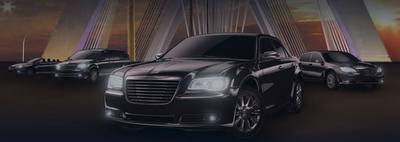
It's pretty bad when the entire advertising and marketing campaign strategy for a car company's lineup of vehicles is based on the idea of keeping them in the shadows as much as possible.
That seems to be Chrysler's strategy, especially with its Sebring replacement, the 200, which debuted in a much-ballyhooed commercial during this year's Super Bowl. As you remember, rap star Eminem hyped the poorly photographed car traveling amongst the ruins of Detroit touting the benefits not so much of the car but of the city - which is about as prosperous today as is Kandahar or Benghazi.
The missing element was the car, which was filmed at night and in severe close-ups. At the time, I thought this was a "teaser" and that we'd get to see more of the car in future ads. Well, this ad was all we'd see, and shorter versions of it have been the sum total of what we've seen of the 200.
Good thing, it turns out. In
one of our first blog posts here, we exposed the true and hideous nature of this car, which frankly looks worse than the Sebring, or at least just as cheap.
Surprisingly, though (or perhaps not, given the looks of the thing) the "shadow" campaign continues on the company's website, where it features the woefully small and pitiful four-car lineup for the "major" automaker photographed in shadows, making the black cars look dark and mysterious, but also strangely LESS elegant - and one assumes that's what the photographer was going for.
Even more oddly, in the "gallery" section for the 200 on the company's site, most of the photos are again in shadow, or in extreme close-up. It's incredibly difficult to get a handle on what the car looks like, or any of them, for that matter.
Is this deliberate? I think so. The four cars Chrysler is putting on the market in 2011 run from just over $19,000 for the 200 to just over $30,000 for the Town and Country minivan (rated one of the worst cars on the market by Consumer Reports last year.) All of them are shown in deep shadow and in solid black.
From a styling point of view, these are among the worst cars Chrysler has ever produced. They are bland, lack imagination and vision, and do not excite in the least. The new headlights on the 300, for example, are meant to be more elegant than the 2005 300, which was a rare hit for the company. Why mess with good, unless you're going to make it better?
I have a few questions for Chrysler:
What happened to your Glory Days? Chrysler has put more concept cars on the road than any other car company. To name just three: the PT Cruiser, the Pacifica, and the aforementioned Crossfire (which, despite that unfortunate name, outsold the Audi TT for a brief while in the mid-2000s.)
Where is your Vision? The Crossfire was a beautifully executed vehicle that took chances. So did the PT Cruiser, which sold millions. What happened to your mojo? It's sure not in the 200.
Where is your electric car? Chrysler was working on a secret weapon, the daringly styled
ecoVoyager (see drawing below) which would have theoretically gotten 300 miles for each charge of its lithium-ion batteries, or even run on hydrogen (though we were promised this with the Chevy Volt, too, but never mind.) This was in 2008, when it hit the auto show circuit. Flash ahead to 2011, and Nissan literally cannot produce enough of its plug-in electric Leaf vehicles, nor can Toyota create enough Prius's to meet demand. Chrysler could have been the talk of the industry with this vehicle. But Chrysler blew it. Again.
 It's pretty bad when the entire advertising and marketing campaign strategy for a car company's lineup of vehicles is based on the idea of keeping them in the shadows as much as possible.
It's pretty bad when the entire advertising and marketing campaign strategy for a car company's lineup of vehicles is based on the idea of keeping them in the shadows as much as possible.











